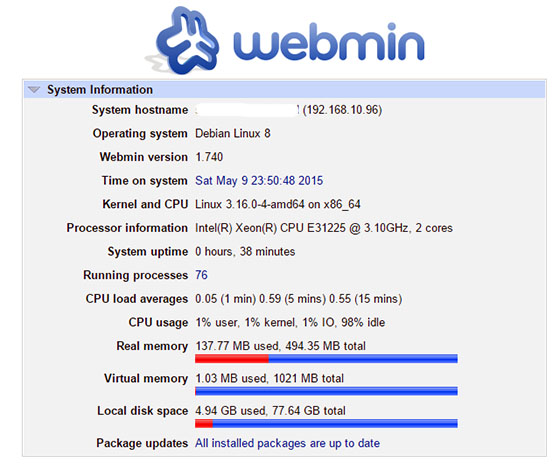
In this tutorial, we will show you how to install and configure Webmin on Debian 8. For those of you who didn’t know, Webmin is a free control panel for managing VPS. Webmin is a web-based interface that is used to manage the VPS web hosting server. With the help of a website, you can set up a user account, apache, DNS and file sharing, and other actions. Webmin is very suitable for beginners who do not know much about the Unix or Linux command line.
This article assumes you have at least basic knowledge of Linux, know how to use the shell, and most importantly, you host your site on your own VPS. The installation is quite simple and assumes you are running in the root account, if not you may need to add ‘sudo‘ to the commands to get root privileges. I will show you the step-by-step installation of Webmin on a Debian 8 (Jessie) server.
Prerequisites
- A server running one of the following operating systems: Debian 8 (Jessie).
- It’s recommended that you use a fresh OS install to prevent any potential issues.
- SSH access to the server (or just open Terminal if you’re on a desktop).
- A
non-root sudo useror access to theroot user. We recommend acting as anon-root sudo user, however, as you can harm your system if you’re not careful when acting as the root.
Install Webmin on Debian 8
Step 1. Before we install any software, it’s important to make sure your system is up to date by running the following apt-get commands in the terminal:
apt-get update apt-get upgrade
Step 2. Add Webmin official repository and make sure that all packages are up to date.
sudo nano /etc/apt/sources.list
And add the following lines:
deb http://download.webmin.com/download/repository sarge contrib deb http://webmin.mirror.somersettechsolutions.co.uk/repository sarge contrib
Fetch and install the GPG key:
sudo wget http://www.webmin.com/jcameron-key.asc sudo apt-key add jcameron-key.asc
Step 2. Installing Webmin on Debian 8 Jessie.
Install Webmin with the following command:
apt-get update apt-get install webmin -y
Step 3. Access Webmin.
Finally, we can access the Webmin panel using our web browser. Webmin uses 10000 as its default port. Type this into our URL address web browser. https://ip-address:10000 then login as superuser or root access privileges. If you are using a firewall, please open ports 80 and 10000 to enable access to the control panel.

Congratulations! You have successfully installed Webmin. Thanks for using this tutorial for installing Webmin on Debian 8 (Jessie) system. For additional help or useful information, we recommend you to check the official Webmin website.